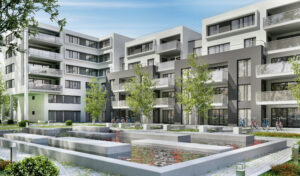What is Cost Segregation?
A cost segregation study might be thought of as an interest free loan that frontloads the depreciation deductions a property would otherwise receive over 27.5 or 39 years.
Cost segregation studies free up capital by accelerating the depreciation of § 1245 tangible personal property, land improvements, and Qualified Improvement Property (QIP) as well as identifying various expensing opportunities associated with commercial real estate. The accelerated time frame varies from immediate to 5, 7 or 15 years rather than 27.5 or 39 years for the building (§ 1250).
Who can Benefit the Most from Cost Segregation?
You may benefit from a cost segregation study if your building or improvements were placed-in-service since 1987, but most studies are limited to the last 5-7 years. You may benefit if your building or improvements are currently depreciating over 27.5 or 39 years. If you have over $500,000 in capitalized costs, it’s a good idea to begin thinking about cost segregation.
Ideal building types include apartment complexes, auto dealerships, banks, casinos, distribution centers, grocery stores, health care facilities, hotels, manufacturing facilities, nursing homes, office buildings, restaurants, shopping centers, sports facilities, warehouses, and other specialized property types. Typically, the more complex buildings will generate the greatest benefit from a cost segregation study. It’s important to note that the property owner must be a tax-paying entity.
Cost Segregation Example 1
The first cost segregation study example we are going to look at is a distribution center. The subject property is a newly constructed 97,000 square foot distribution center. It is situated on 19 acres and was placed-in-service in 2018. The company is a distributor of chemicals and other products for the commercial landscaping industry.
The building has a showroom with offices on the 1st floor and a small mezzanine with typical finishes and equipment connections. The warehouse also has typical finishes and equipment for this type of facility. In addition, it has a seed cooler room with specialized mechanical equipment and special electrical connections for lighted racking that qualify as personal property. Land improvements included all concrete paving, fencing, a rail spur, landscaping, and a covered fuel island.
The Source Advisors Cost Segregation engineers were engaged to analyze the construction costs. Contractor payment applications, general ledgers, and architectural plans were analyzed for proper building, land improvement, and personal property classifications. They conducted a thorough inspection of the property. Key property personnel were also interviewed. A detailed report was delivered, identifying and documenting all of the components that qualify for a shorter tax life.
Source Advisors reclassified 31% or $2,450,000 as 15-year land improvements and 13% or $1,030,000 as 5-year tangible personal property. This leans towards the high end of the expected range and was due to the specialized mechanical equipment, the extensive concrete paving, the rail spur, and the fuel island. Tangible personal property and land improvements qualified for 40% bonus depreciation under the PATH Act.
Cost Segregation Example 2
The second example we’re going to look at is an auto dealership. The subject is a newly constructed auto dealership that was placed-in-service in 2019 for $9,200,000. The building includes 10 service bays, a customer waiting area, a showroom, a parts department with a metal plank mezzanine, and administrative offices. There were also site improvements such as asphalt paving, landscaping, fencing, sidewalks, site drainage and site lighting.
The building is a one-story, steel frame structure, with exterior metal paneling and aluminum storefront windows with a metal roof. Interior finishes include tile flooring, decorative millwork, and acoustical ceiling tiles.
The Source Advisors Cost Segregation engineers were engaged to analyze the actual construction costs, in the form of contractor invoices, and allocated the cost detail to various trades and building components. They conducted detailed estimates from the construction drawings and augmented those findings with additional estimates performed during the site visit of the property. Key property personnel were also interviewed. A detailed report was delivered, identifying and documenting all of the components that qualify for a shorter tax life.
Source Advisors reclassified 26% or $2,392,000 as 15-year land improvements and 20% or $1,840,000 as 5-year tangible personal property. This property benefited from the high ratio of land improvements, in the form of extensive parking lots and lighting, to the overall cost of construction. It qualifies for 100% bonus depreciation under the Tax Cuts and Jobs Act.
The building has a showroom with offices on the 1st floor and a small mezzanine with typical finishes and equipment connections. The warehouse also has typical finishes and equipment for this type of facility. In addition, it has a seed cooler room with specialized mechanical equipment and special electrical connections for lighted racking that qualify as personal property. Land improvements included all concrete paving, fencing, a rail spur, landscaping, and a covered fuel island.
The Source Advisors Cost Segregation engineers were engaged to analyze the construction costs. Contractor payment applications, general ledgers, and architectural plans were analyzed for proper building, land improvement, and personal property classifications. They conducted a thorough inspection of the property. Key property personnel were also interviewed. A detailed report was delivered, identifying and documenting all of the components that qualify for a shorter tax life.
Source Advisors reclassified 31% or $2,450,000 as 15-year land improvements and 13% or $1,030,000 as 5-year tangible personal property. This leans towards the high end of the expected range and was due to the specialized mechanical equipment, the extensive concrete paving, the rail spur, and the fuel island. Tangible personal property and land improvements qualified for 40% bonus depreciation under the PATH Act.
Cost Segregation Example 3
The third example we are going to look at today is a national Drive-Thru and Eat-In hamburger focused restaurant. The $3,000,000 building is approximately 2,000 square feet. The lot is 25,000 square foot and includes parking, sidewalks, curbs, underground rainwater runoff and landscaping that are treated as Land Improvements with a 15 year tax life rather than 39 years. The interior retail/food service spaces had millwork, data, point of-sale, vinyl flooring, drive thru windows, decorative light, electrical, plumbing and HVAC that are treated as Personal Property with a 5 year tax life rather than 39 years.
The Source Advisors Cost Segregation engineers were engaged to analyze the acquisition cost. They then applied a cost model to allocate the purchase price to various trades and building components. They conducted a thorough inspection of the property where estimates were performed. Key property personnel were also interviewed. A detailed report was delivered, identifying and documenting all of the components that qualify for a shorter tax life.
Source Advisors reclassified 15% or $450,000 as 15-year Land Improvements and 25% or $750,000 as 5-year tangible personal property. This is a typical result for a national franchise hamburger focused restaurant. The results were driven up by the specialty grocer and high-end food service tenants.





